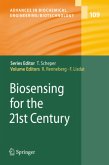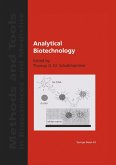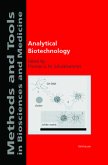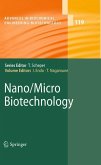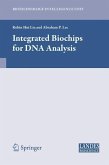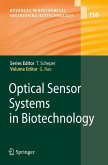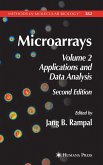To detect, quantify, and model biologically signi?cant molecules is getting more and more important in our everyday life, in medicine, industry, and environment. When a group of enthusiasts like Frieder Scheller started more than 40 years ago to develop biosensors, they would not foresee that biosensors are nowavailableineverydrugstore,thatthehumangenomesequenceisavailable on the Internet, that DNA tests help in forensic cases, that we can track down thepathofourancestorsfromAfrica... This allis bioanalytics in practice! FriederSchellerisoneofthepioneersofthis?eld.So,wedidnothesitatefor longwhenThomasScheper,theSeriesEditor,askedustocompileamonograph th writtenbytheleadingspecialist tohonorhis65 birthday withafreshinsight into the ever expanding bioanalytical ?eld. Thanks to all contributors and thanks to the staff at Springer Verlag: Birgit Kollmar-Thoni, Ulrike Kreusel and Dr.Marion Hertel fortheir help! st Even in the 21 century biosensors will continue to play an important role in bioanalytics. By de?nition biosensors are characterized by a rather close contact of the biocomponent for recognition and the transducing element. Thus,thedevelopment ofbiosensors isahighlyinterdisziplanary ?eld.Future developments can be particularly seen in sensitivity enhancement down to the molecular level, switchability of the sensing device, miniaturization and integration into microsystems, incorporation of new transduction and ch- acterization methods and the use ofarti?cial recognition elements. This book tries to cover recent developments in order to illustrate the potential of thisrather fascinating area of science. Atthestartofthebook,youwill?ndachapteraboutthehistoryofbiosensors and Frieder Scheller s contribution. It gives you an impression what this re- less,unsel?shandcreativescientisthasdone.Tounderlinethebasicbiosensor idea we start here with a cartoonabout Frieder Scheller s work: XII Preface Aller guten Dinge sind drei ( all good things are 3 , as Germansbelieve). They all may partly characterize Frieder: Chancefavorsonlythepreparedmind.
"Critical assessment This book is written by different experts with different backgrounds, which highlights the interdisciplinarity of this field. The chapters are approximately the same length and structure and are all of high quality. References are cited extensively, which helps interested readers to access more details about the contents of each chapter. The book gives a good overview about current developments but does not deal too much with revolutionary or visionary aims. It simply shows and presents the knowledge of leading experts in this field.
Readership recommendations This book can be recommended for scientists, technical personnel and advanced students wanting to improve their knowledge and to get an overview of an interesting field. Marketing experts will also get an impression regarding future biosensor developments.
Summary Biosensors for the 21st century gives a good insight and overview of the field of biosensors and shows the impact of Frieder Scheller in the world of biosensing."
From G. Urban, Anal Bioanal Chem, DOI 10.1007/s00216-008-2530-x
Readership recommendations This book can be recommended for scientists, technical personnel and advanced students wanting to improve their knowledge and to get an overview of an interesting field. Marketing experts will also get an impression regarding future biosensor developments.
Summary Biosensors for the 21st century gives a good insight and overview of the field of biosensors and shows the impact of Frieder Scheller in the world of biosensing."
From G. Urban, Anal Bioanal Chem, DOI 10.1007/s00216-008-2530-x
Critical assessment This book is written by different
experts with different backgrounds, which highlights the
interdisciplinarity of this field. The chapters are approximately
the same length and structure and are all of high
quality. References are cited extensively, which helps
interested readers to access more details about the contents
of each chapter. The book gives a good overview about
current developments but does not deal too much with
revolutionary or visionary aims. It simply shows and
presents the knowledge of leading experts in this field.
Readership recommendations This book can be recommended
for scientists, technical personnel and advanced
students wanting to improve their knowledge and to get an
overview of an interesting field. Marketing experts will also
get an impression regarding future biosensor developments.
Summary Biosensors for the 21st century gives a good
insight and overview of the field of biosensors and shows
the impact of Frieder Scheller in the world of biosensing.
From G. Urban, Anal Bioanal Chem, DOI 10.1007/s00216-008-2530-x
experts with different backgrounds, which highlights the
interdisciplinarity of this field. The chapters are approximately
the same length and structure and are all of high
quality. References are cited extensively, which helps
interested readers to access more details about the contents
of each chapter. The book gives a good overview about
current developments but does not deal too much with
revolutionary or visionary aims. It simply shows and
presents the knowledge of leading experts in this field.
Readership recommendations This book can be recommended
for scientists, technical personnel and advanced
students wanting to improve their knowledge and to get an
overview of an interesting field. Marketing experts will also
get an impression regarding future biosensor developments.
Summary Biosensors for the 21st century gives a good
insight and overview of the field of biosensors and shows
the impact of Frieder Scheller in the world of biosensing.
From G. Urban, Anal Bioanal Chem, DOI 10.1007/s00216-008-2530-x



